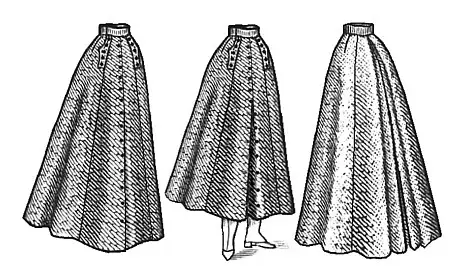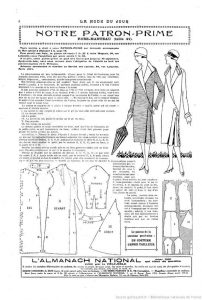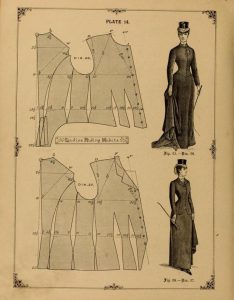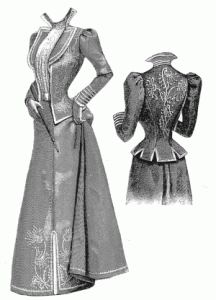The Victorian costume pattern can be traced by to the 1840s when Queen Victoria had just come to power. Before the reign of Queen Victoria, fashion revolved around men. But with the queen coming to power, women came to the forefront.
Skirts Patterns
In 1840s the full skirts were supported by a vast collection of petticoats made from horsehair and stiffened with cane and padding. Most clothes were trimmed in a fashion that they were wide at the shoulder, narrow at the waist, and wide again at the hem of the skirt. This would highlight the tight-laced waistline.

The shoulder line ended below the natural shoulder restricting the arm movement. The sleeves were normally narrow for the day dresses. By 1850s, the sleeves had become wide, the skirts expanded in size as more petticoats were worn.
Crinoline designs
In 1856, the cage crinoline was popular and certain changes were made in them. The skirts which only reach a maximum width, now expanded freely beyond the maximum, the hoop was round in shape and the skirts were made of straight widths of fabric folded into a waistband. The jacket bodice which expanded over the hips was also accepted. These jackets did not necessarily match the skirt fabric.
For evening occasions, women could bare their shoulders. These necklines had a point at both front and back. By the late 1800s, the bodice for casual wear ended at the natural waist of the women but in the case of the formal bodice, it had two long points in front and one or three points in the back. By 1863, hoops were made in an elliptical shape, with the back fuller than the front.
In 1864, the two-piece coat sleeve was narrow at the wrist and wider at the elbow. In 1865 the skirt width reduced at the hips, but in 1867, the skirt size shrunk. By 1869, the hoops were replaced with bustle. In the early Victorian period, women wore white petticoats but after the war years, white petticoats were only used in the house or for evening wear only.


For outdoor occasions, colored fabrics, either solid or stripes were used. Red was the favorite color worn by women. The petticoats were made from Camlet, Cashmere, flannel, taffeta, etc.
By 1877, the bustle had reduced from wireframes to a small pad. The poufs in the skirts dropped to behind the knees. Colors and textures were mixed with complex creations of skirts, swags and drapes. The prime focus was on the skirts that had simple trims on the bodice.
However, with every passing year, the skirts became narrower and the bodice longer. By 1879, the fan skirt was the style. In order to make a fan skirt, the back skirt is restricted to about knee height and is then allowed to flow out in a full fan-shaped train. Petticoats were necessary to hold the fan skirts in good shape.
The necklines for day wear became more traditional with a high collar or open in a small V-shaped collar. The open neckline was filled with a linen collar. By the end of the 18th century, the skirts were very slim and the train had disappeared.
In 1883, bustle gained popularity. The skirts were still slim in front and sides, but the back ballooned out over a bustle framework. The bustle again lost its hold in 1890. Sleeves were gradually expanded and the bodice became short at the hip or was as long as a jacket. In 1897, sleeves lost the fullness at the elbow. In 1898, the shape of the skirt was changed.
References:
Victorian dress-free patterns : see patterns
free historical sewing patterns from Victorian, Edwardian and Elizabethan times: see
Edwardian sewing patterns – check out this site
This site has a good collection of plus-size victorian dress patterns
